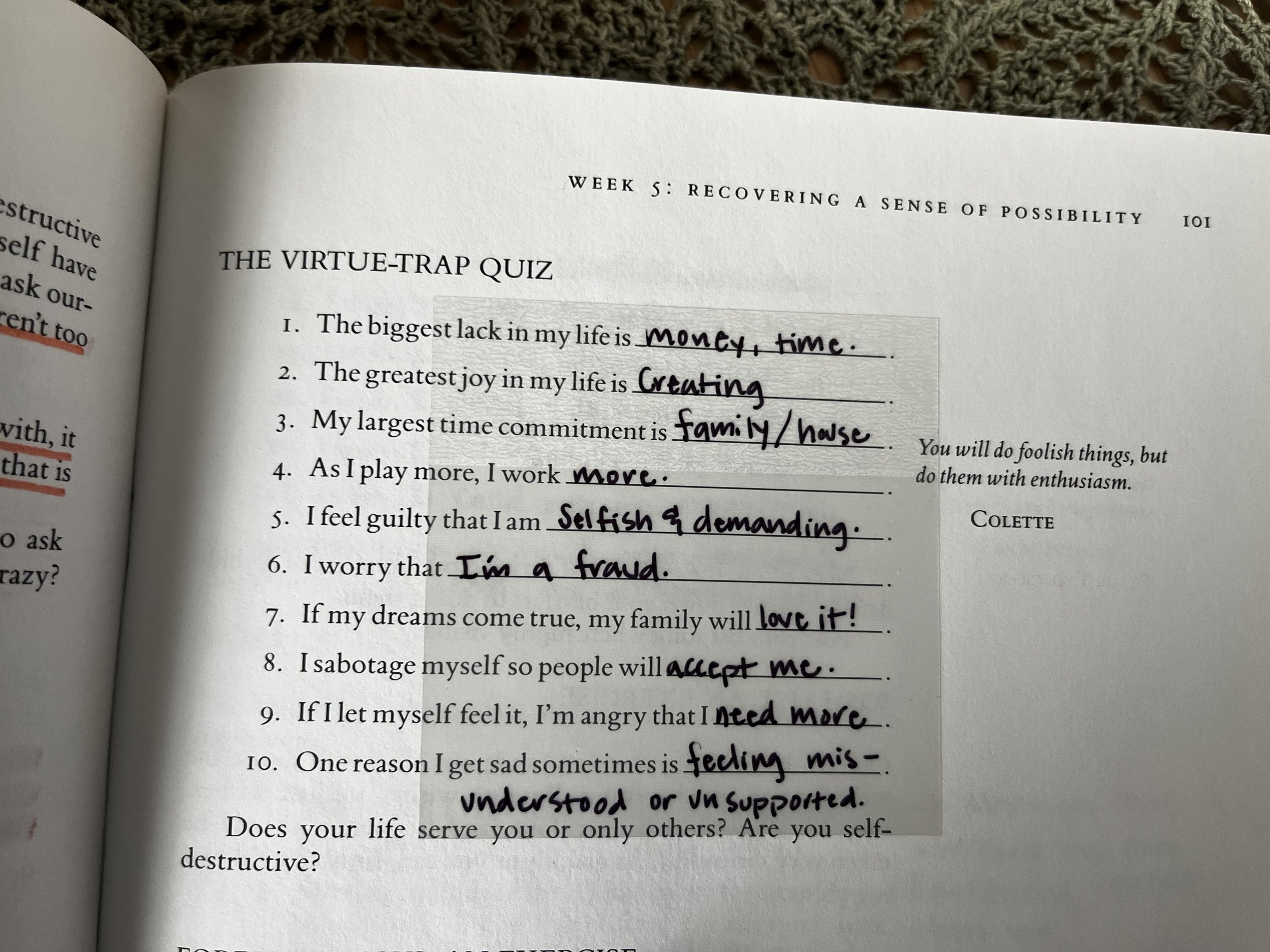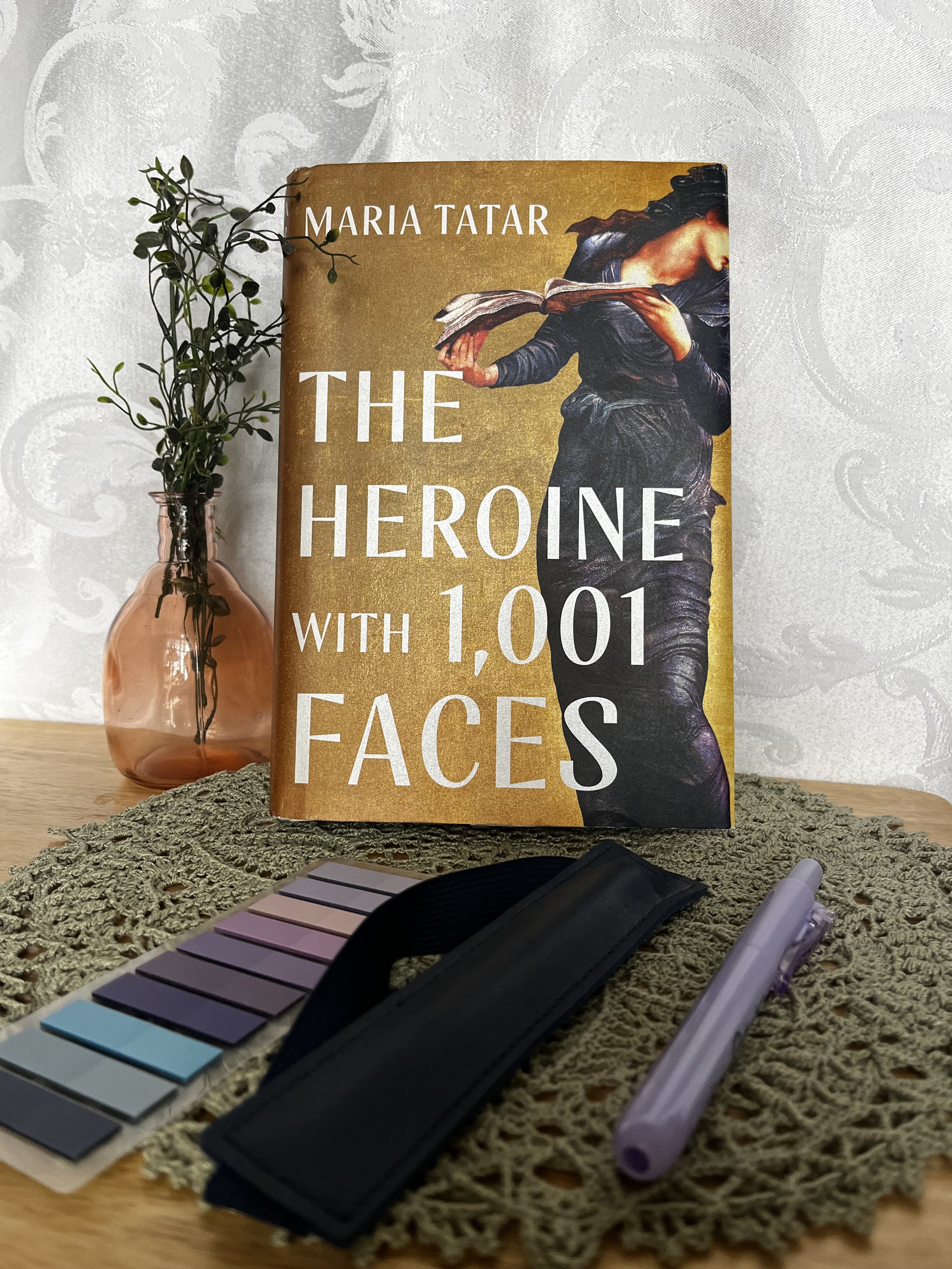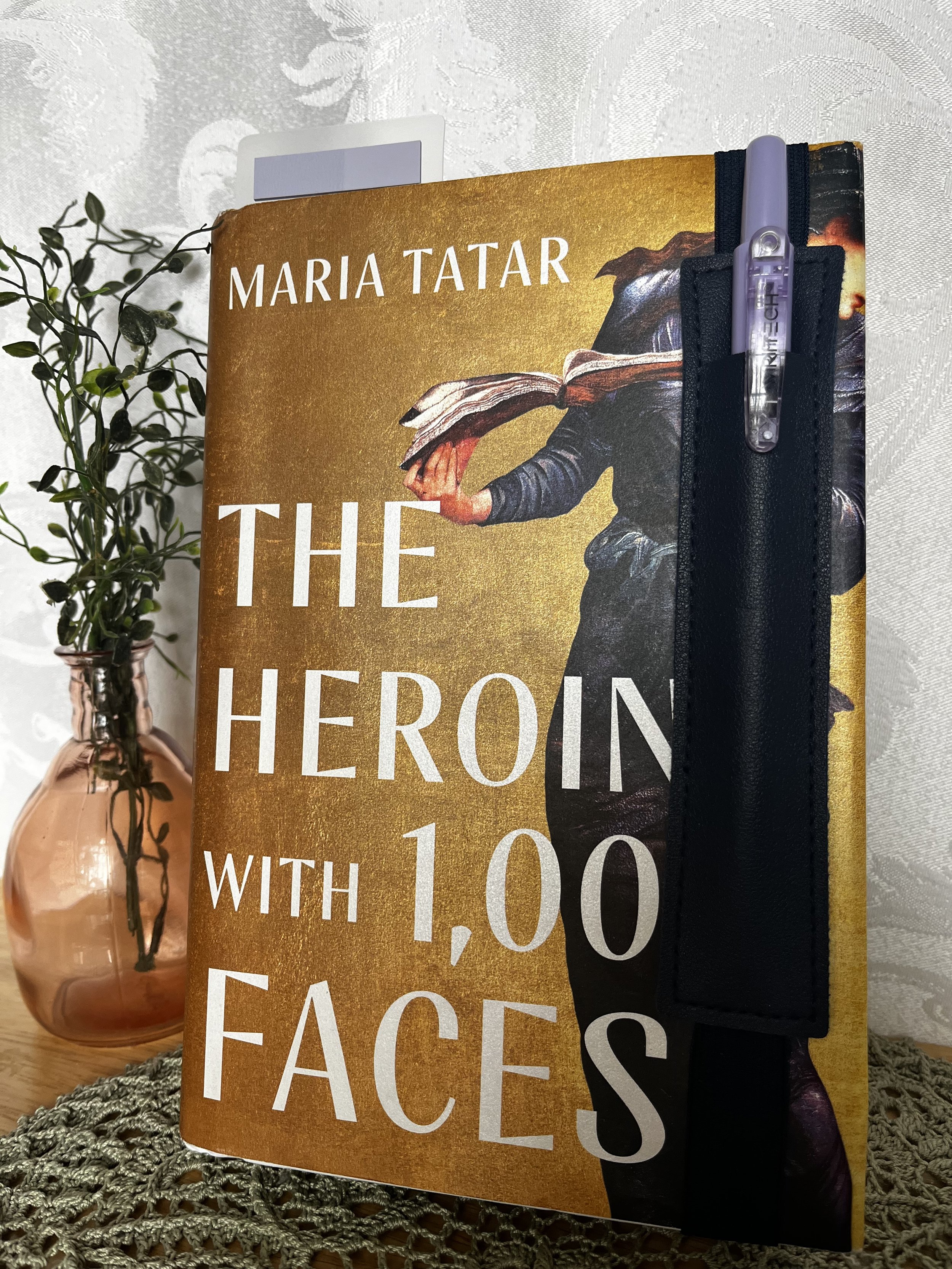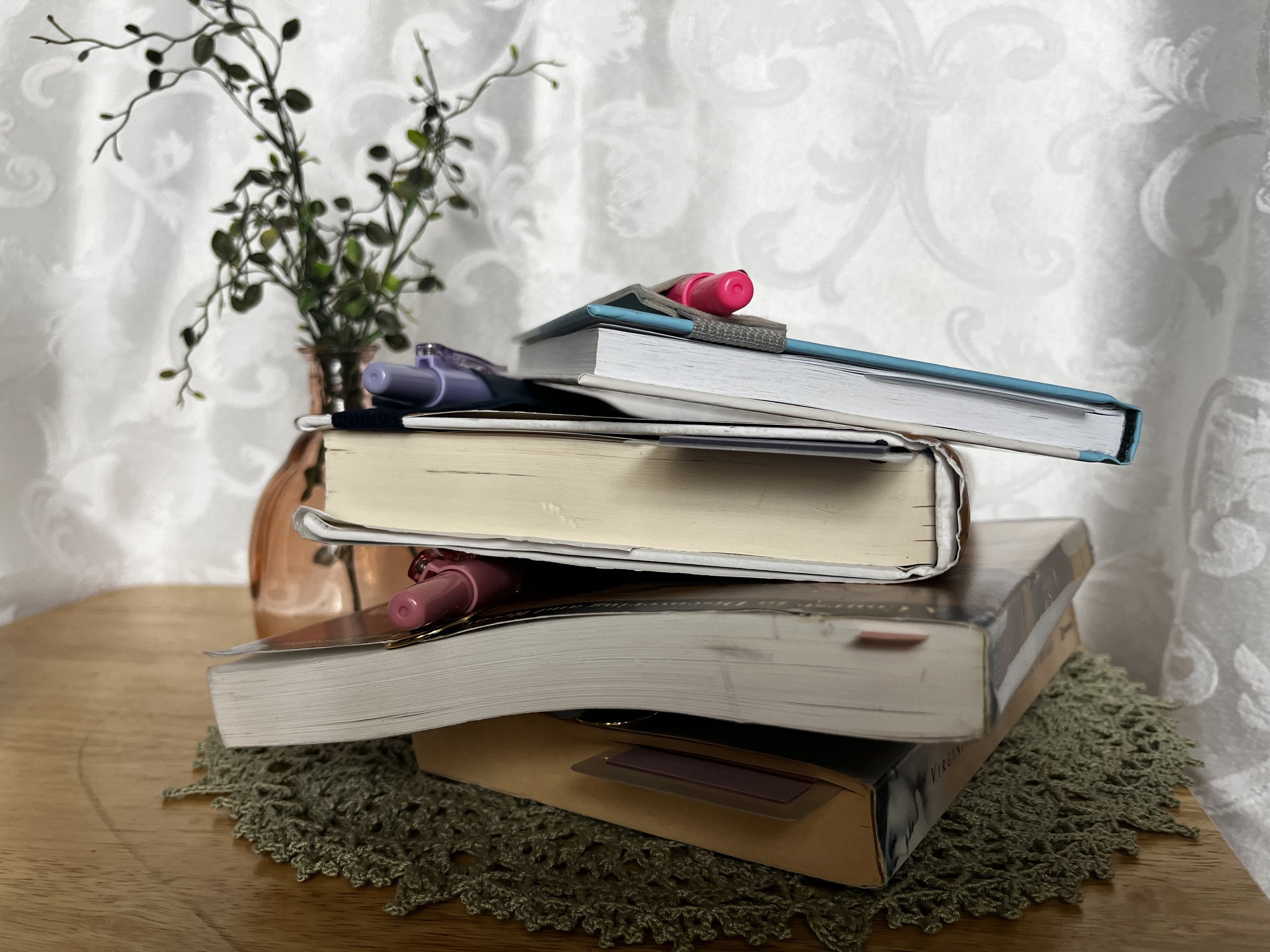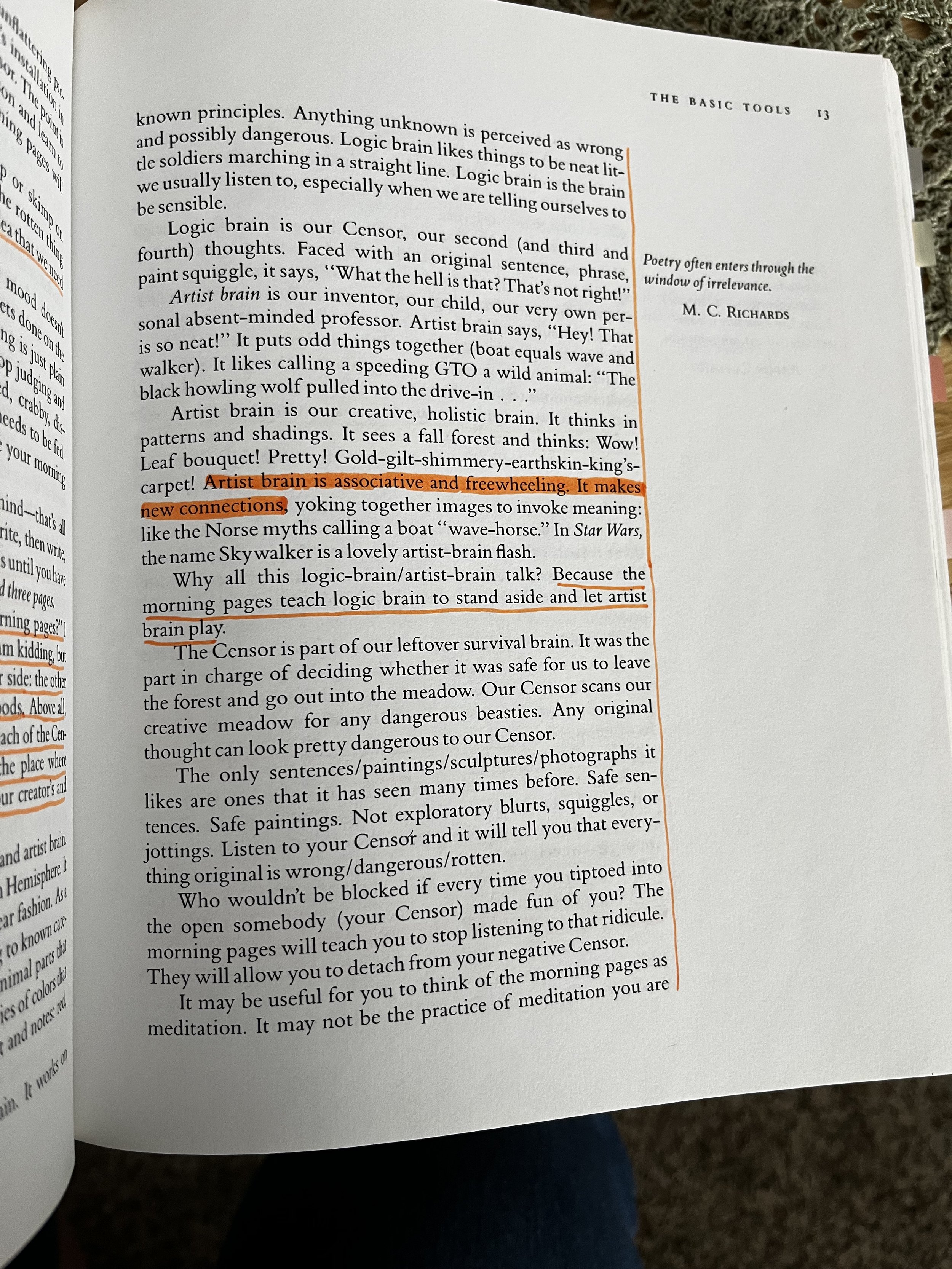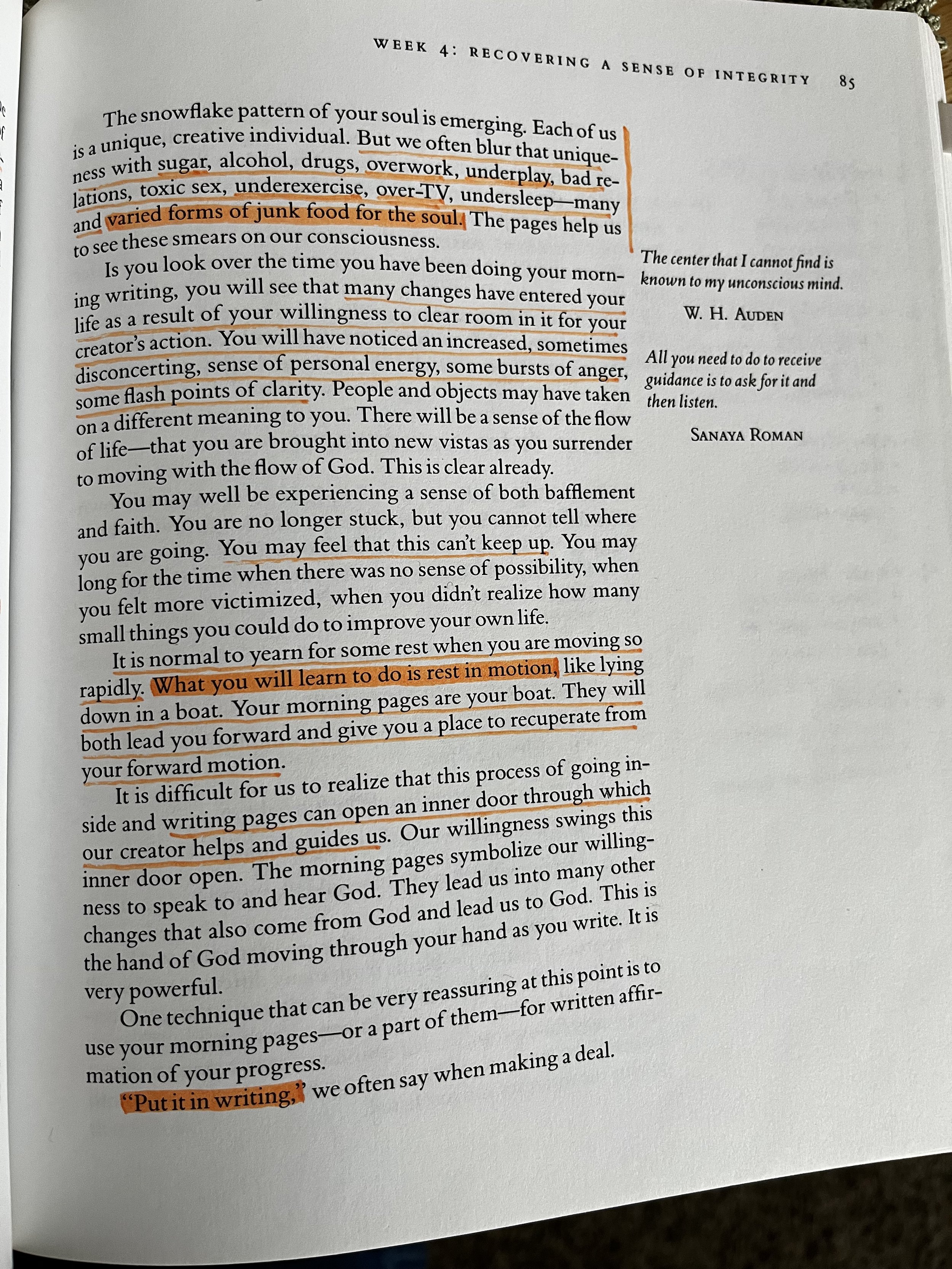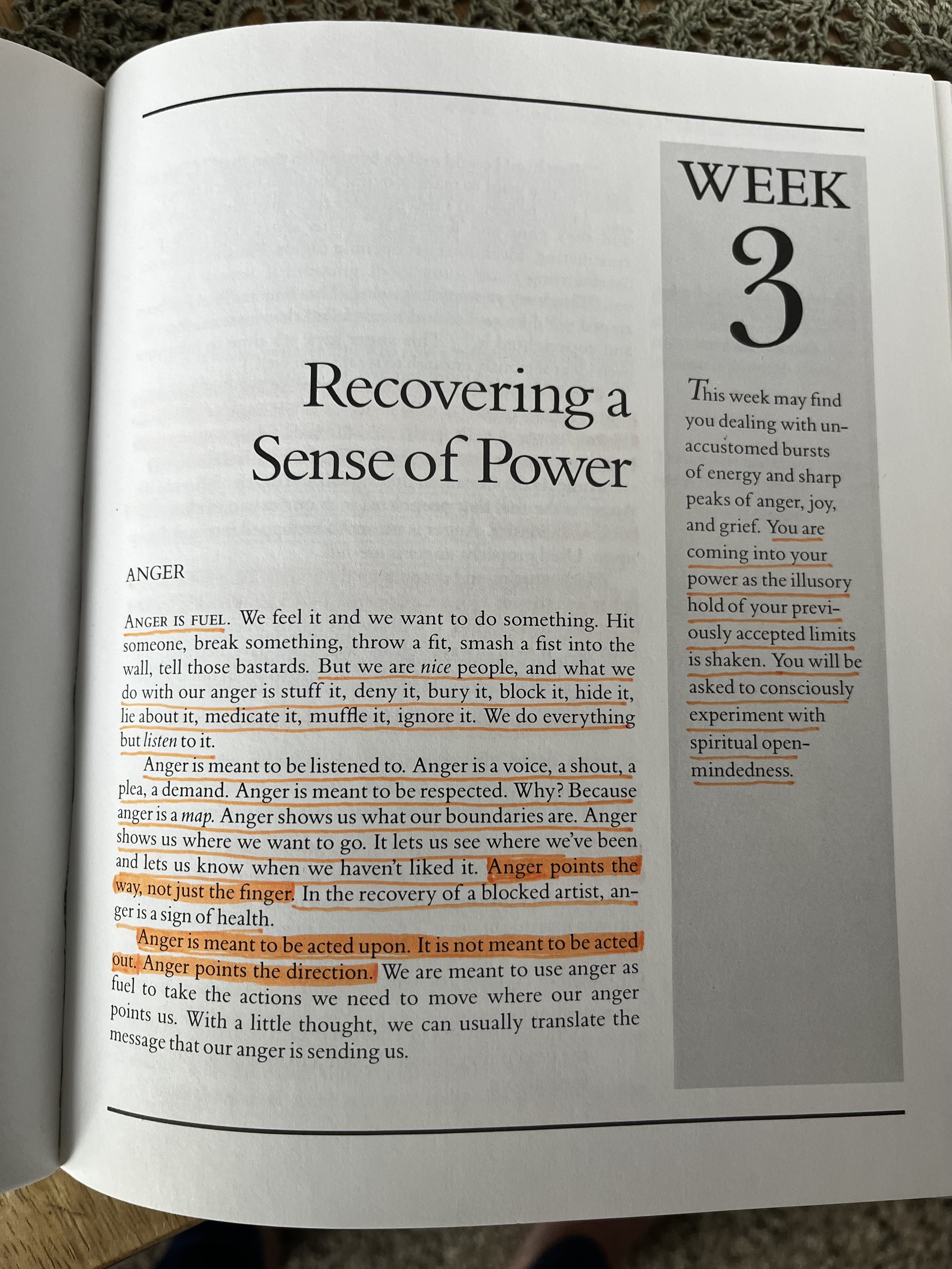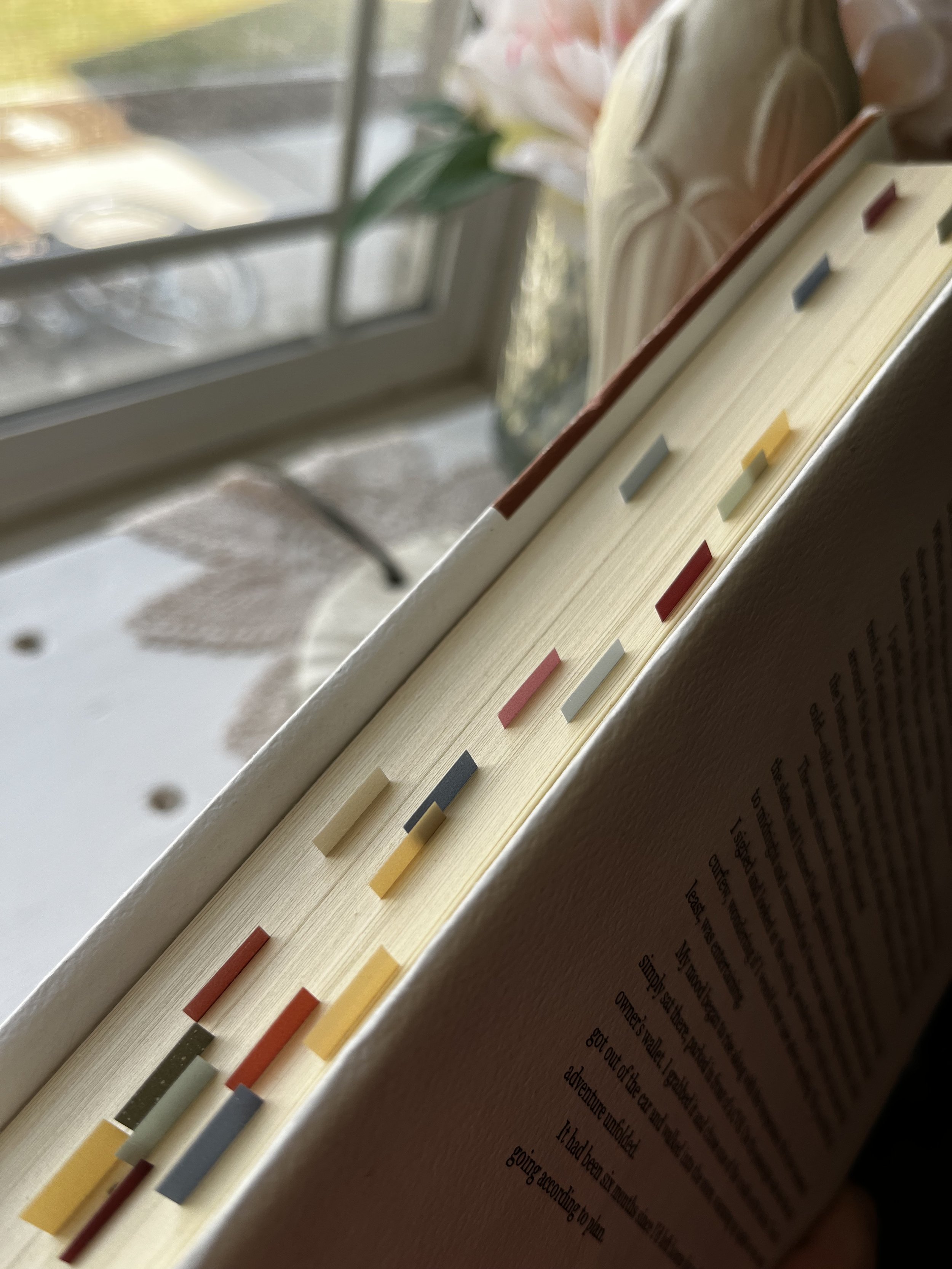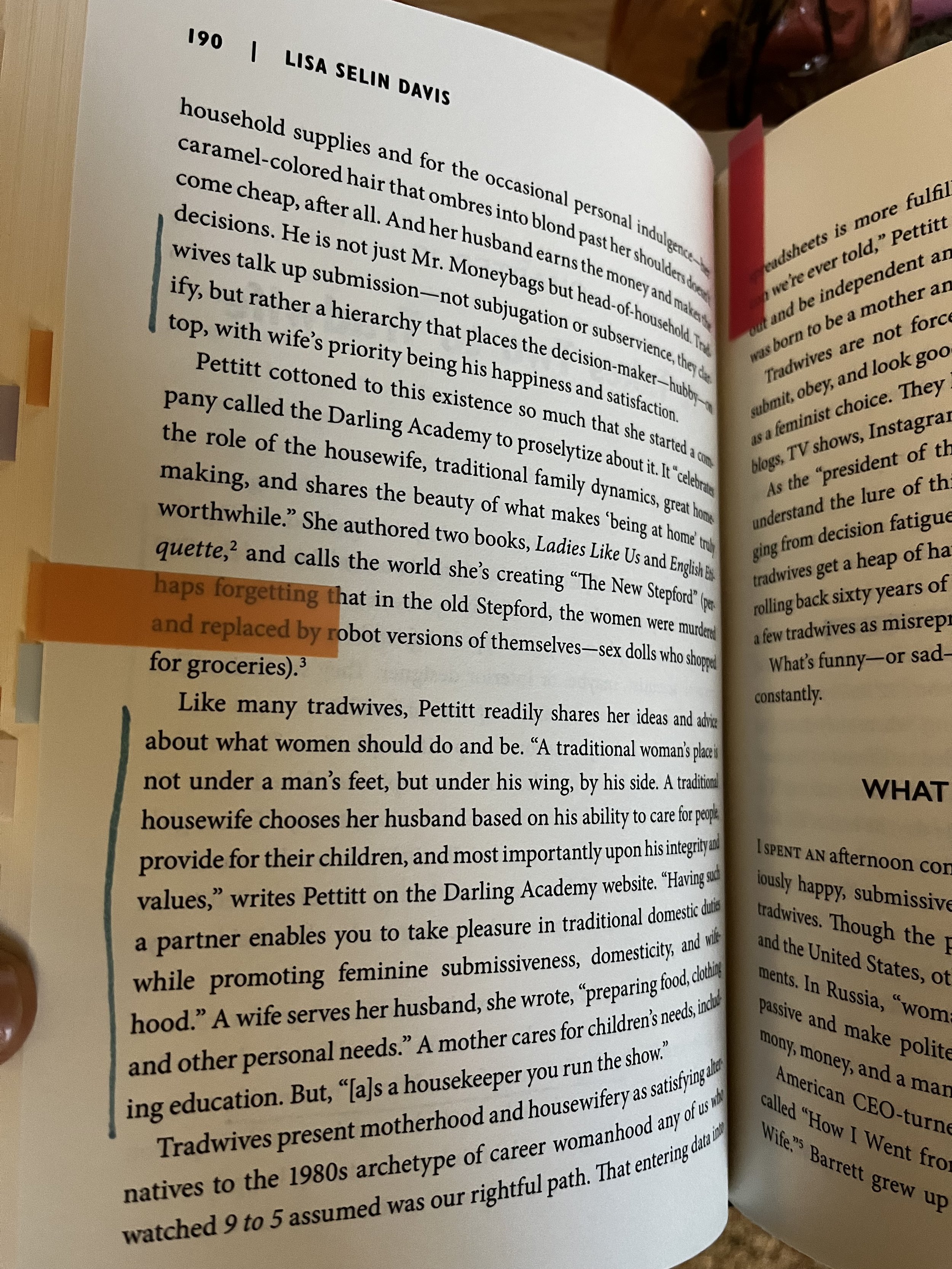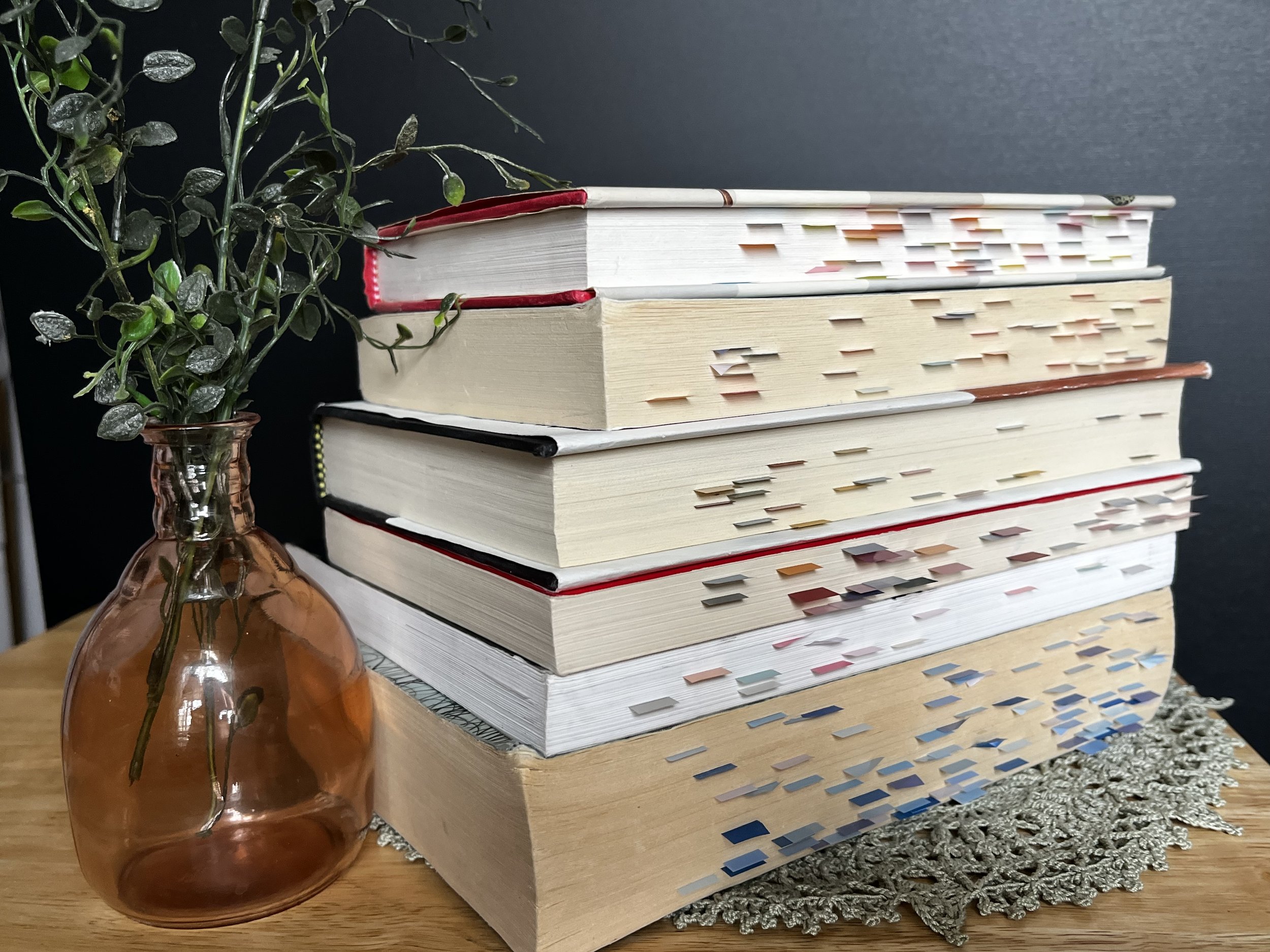A Simple System for Annotations
An easy and intuitive way to mark your books as you read! The words we lose
Do you ever come across the most beautiful sentence in a novel and want to tuck it in your pocket to keep for always?
Do you ever read nonfiction, hoping to hold all the information in your head but sure that half of the brilliant ideas are falling out before you can even start to digest them?
Have you ever found the word-perfect expression of your soul?
Or the funniest little anecdote?
Or the one fact that will support the argument you had with your partner?
Or the statistic that will help your friend feel better?
Or a new, exciting word to add to your vocabulary?
Or the point you wanted to discuss in book club?
And find yourself frantically flipping through the pages of a book thinking: “I know it’s in here somewhere!!…”
But, you never find it again?
Yeah.
Me, too.
I’m going to share with you an easy and intuitive way to mark your books as you read—turning them into personal resources you can quickly reference anytime!
(Did I mention that it is effective, flexible, and inexpensive, too?)
Note-taking for yourself!
(not for a teacher or a preacher…)
There were about 12 years where life’s demands, societal expectations, and familial duty held me so tight, I didn’t have the time or the head space to breathe…I mean, read. I was STARVING for literature, my favorite brain food.
Picking up books again and giving myself every permission to feed my mind felt SO GOOD. And, in this digital age, if I am going to buy and hold a print copy in my hands and take the time and space and energy to read it–I want to make the most of it!
But, my annotation skills from the past failed me miserably. I was used to taking notes in school (marking what my teacher wanted me to remember) or taking notes in church (marking what teachers/preachers said God wanted me to remember).
When I started reading for myself, I realized I needed to take notes for myself.
But, what did that look like?
In this digital age, if I am going to buy and hold a print copy in my hands and take the time and space and energy to read it–I want to make the most of it!
Used books & annotations from strangers
I buy a lot of used books. It fits my budget. I love the sustainability! And, I like the little surprises.
I’ll find odd little bookmarks: receipts, pressed flowers, newspaper articles, airplane tickets. Sometimes there’s a thoughtful inscription in the front cover. (One time, I got a signed copy of a book by Annie Dillard!) I even love the coffee or tea splashes dotting a page here or there! I like feeling and seeing and imagining the thumbprint of energy that comes from the previous reader.
The not-so-lovely surprises are messy markings and notes.
How can I concentrate (or find what I need) when a bright red line is sloppily running through words?
I’ve seen a lot of different attempts at annotations. Mostly, I don’t get too upset seeing that someone marked up the pages, because, usually, about 2 or 3 chapters in, the notes stop. I guess most people give up on that intentional kind of reading or get side tracked and don’t get around to finishing it—or any number of other scenarios. (Believe me, I get it!)
But, what are my fellow readers marking and why/for whom?
What system are they using?
Are they even using as system?
I found some fantastic notations in a 1985 edition of The Crone by Barbara G.Walker. The handwriting makes me think of a beautiful, soft, white-haired woman with a snappy mind. She marked this book with all of her questions. I loved them all! And I wondered if she always read books this way?
Where we read
Marking books in school or church, I was usually at a desk or sitting down. But, reading for myself nowadays–I’m almost never at a desk and almost always curled up on the couch, snuggled in my bed, or stretched out in the sun, wanting to rest and relax my body while my mind goes to work or goes to wandering.
This poses a specific set of circumstances when it comes to reading supplies, namely: bookmarks, post-its or tabs, highlighters/pens/pencils, AND a way to keep all of it together!
Supplies:
3 problems and 3 solutions
Bookmarks
I don’t like to dog-ear pages (the page never quite recovers). I can’t trust myself to memorize page numbers (like I used to in high school). I’ve tried the magnetic bookmarks, the fancy paperclips bookmarks, the pretty tasseled bookmarks, and the cheap & easily replaceable blank notecards as bookmarks. But, I usually set the bookmark down somewhere and completely lose it: either in the blanket, or to the wind, or under my butt. Then, I came across these:
1
They are inexpensive!
They come in a thousand PRETTY colors.
They are both a bookmark and tab holder! (Eeek!)
The tabs are better than Post-its: more sticky, less bulky & no residue
These bookmarks are stiff enough that when I lose them in the blankets, they are fairly easy to find. They make a sound if they fall off the couch onto the floor. And, they don’t blow away quite as easily as a notecard!
ALSO, if you happen drop them in the bathwater, they dry off just fine! (I bet you’re wondering how I figured that one out…)
I have found these for as little as $0.20 each!
I don’t always want to mark up books, especially ones I borrow from friends or the library. And, I usually I don’t want to mark up novels, so I will JUST use tabs.
If there is an important section, I’ll just add a tab. Done! Easy for me to reference back to and easy to clear off and return!
2
Tabs are temporary!
Highlighters, pens/pencils
I found that in my languid reading positions, I am not precise enough with a pencil or pen, and my markings end up unforgivably messy. Also, pencils get surprisingly dull surprisingly fast (and where DID that stupid pencil sharpener go?), and pens (even the “erasable” ones) are so, so…permanent.
I tried the Bible markers that are kind of like crayons. These were not precise enough and left a waxy residue. (Yuck.)
I like highlighters, but some were too inky and bled through the page. Others were too bulky to hold. Also, there seemed to be such a limited number of colors (do I really have to use this offensive yellow to mark the whole book?). And, a lot of highlighters didn’t last through the entire book, meaning I had to switch colors part way through. (Insert Grinch-level-frowny-face here.)
But, the BIGGEST problem I had was constantly chasing the highlighter LID around!
Then, I found THESE: Writech Retractable Highlighters!
They come in 24 different colors!
They don’t bleed through the page.
They are easy to hold.
There is NO LID to mess with. (!!!)
The clip is an actual HINGE, not just a plastic piece.
AND, there are easy, affordable refills!
I can usually buy these highlighters for about $1 a piece, but the refills are only $.50!
Sometimes I don’t want to use highlighters (like in a vintage book, for example). In that case, I’ve used THESE: Bic Velocity mechanical colored pencils. They do have refills, but I go through them very quickly!
*to refill this pencil, just pull off the eraser and drop in the lead!
3
Keeping it together
If I am reading a book, I have to fit it in where I can. That means I need it ready to grab as I run out the door to the orthodontist appointment, or easy to snag for stolen hour in a hot bubble bath, or ready to throw it in last minute with my beach towels for a trip to the lake. It seems like:
If my book isn’t ready to go, then it doesn’t come along!
Bookmarks are easy and stay in the pages, but highlighters are a different story. I did some experimenting and found these lovely solutions for keeping the correct highlighter with the book while I’m reading it!
I use these clips for paperback books:
I use these holders for hardback books:
Yes: the highlighters do fit!
Add these to any book, and you’re ready to go!
I like keeping the same pen or pencil with any of my journals or notebooks. If there is not a spiral binding to clip a pen to, I LOVE to use these! The square portion has an adhesive back, adding an elastic pen holder to any book!
*These are a little too small for the highlighters, but fit regular pens and pencils beautifully.
Velum Post-its
I don’t always want to write in workbooks, but what are the chances I’ll sit down and write out the answers? Not good.
Enter the vellum Post-it. For me, these require a DESK situation and a PERMANANT MARKER, but I’m always more intentional with workbook work, so that works for me!
PLUS, my answers can always be cleared away, ready to use again!
From The Artist’s Way by Julia Cameron
Notebook by subject
As a writer, if I have a subject I’m interested in gathering information on, I start a notebook.
I use these and gear them up with their own pen. I handwrite the reference AND the quotation to use for later.
The System
Step 1: Get ready
When I pick up a new book, I get it “dressed” with the clip or band, a highlighter that compliments the cover, and a bookmark that also looks great with the cover. Then, this book is in action, ready to go at a moment’s notice!
*Sometimes, I just use the tab bookmarks and skip the highlighter—especially for novels.
For this book, I chose a dark blue pen holder, a lavender colored highlighter, and a bookmark with soft blue and purple colored tabs.
Now, my book is “dressed” and ready to go out! (Isn’t she pretty?!)
The attached highlighters keep me from stacking too many in my “reading” pile–I can only have 2 or 3 at a time before my stack falls over!
Step 2: Make your mark
I use my highlighter in 4 ways and customize the combinations from there.
Thin underline indicates something I like
Full highlight indicates something I LOVE
Side line indicates a paragraph I like
Side highlight indicates a paragraph I LOVE
Tab indicates something I might want to go back to
I’ve found I have no need to scribble words in the margins. The book already has the words. I use what’s there.
*These pages are from The Artist’s Way by Julia Cameron, 10th edition.
HOW to highlight:
This may seem silly, but I often have to remind myself to REST my hand on the page as I highlight, because it gives me a straighter line. My default thinking is that I’m such an Advanced Adult that I can free-hand it. NO! DON’T DO IT!
Resting your hand makes it much easier to get a clean, straight line!
Step 3: No color code
Well, you can use a specific color to represent a specific subject IF YOU WANT, but I found that was too cumbersome.
I don’t want to hold a color-coded-rubric in my head while I read, PLUS it is really frustrating when you use up the color for that one topic and have to go searching for a similar color, or…heaven forbid!…switch colors. THAT messes up the entire system!
So, instead, I PLAY. I just use whatever colors look nice next to each other, keep it varied, or sometimes I’ll choose my favorite colors to tab my favorite things—and I can keep that constant through ALL the books I read, not just that one.
(I like purple and pink.)
I add tabs in 3 ways:
Horizontal:
because we read from top to bottom, I add my tabs ABOVE the sentence I might want to go back to on whatever page it’s on.
Vertical:
If there is an idea I want to discuss specifically (for book club or whatever) I’ll add a vertical tab in addition.
Diagonal:
I have added diagonal tabs to remind me to go back and find the book that was referenced. Crooked tabs drive me a little nuts, so it’s an effective reminder! When I get the book on my Libby holds list or ordered through Thriftbooks.com or Bookshop.org, then I take it off.
*These pages are from Housewife by Lisa Selin Davis
HOW to tab:
I used to throw myself off when I couldn’t get the tab exactly where I wanted it (especially when I was tired and more clumsy) and kept pulling the tab off and resetting it over and over and over…and then I realized that the glue on these tabs isn’t very strong, so I follow these steps to get perfect placement almost every time:
Step 4: FEEL it out
Lean on YOUR intuition as you read.
Does this sentence deserve just a tab? Or a highlight? Or a highlight AND a tab? Do whatever feels good to you.
Yes–I said FEEL,
not THINK.
Don’t THINK about this.
Does it FEEL important? Full highlight! Not so much, but a little interesting? side-line the paragraph.
Easy peasy!
I mark ANYTHING that my eyes read twice. For any reason.
(Because the words smacked me upside the head or just because it’s a pleasant turn of phrase.)
It keeps me from ruining my reading flow and second guessing myself! Plus, I would rather mark it than not.
Side Rule:
Highlight new words!
In nonfiction books especially, I highlight the new terminology—at least the word (maybe the definition, too, or, maybe not.) But, it makes it so easy to flip through and find!
Now you’re in on it! This annotation system is:
Easy! Effective. Intuitive. Flexible! Inexpensive.
Simple.
I hope these tools and ideas help you develop your own system, so you can find (and return to!) the words that have meaning for you.
Happy reading!
~Kate













































